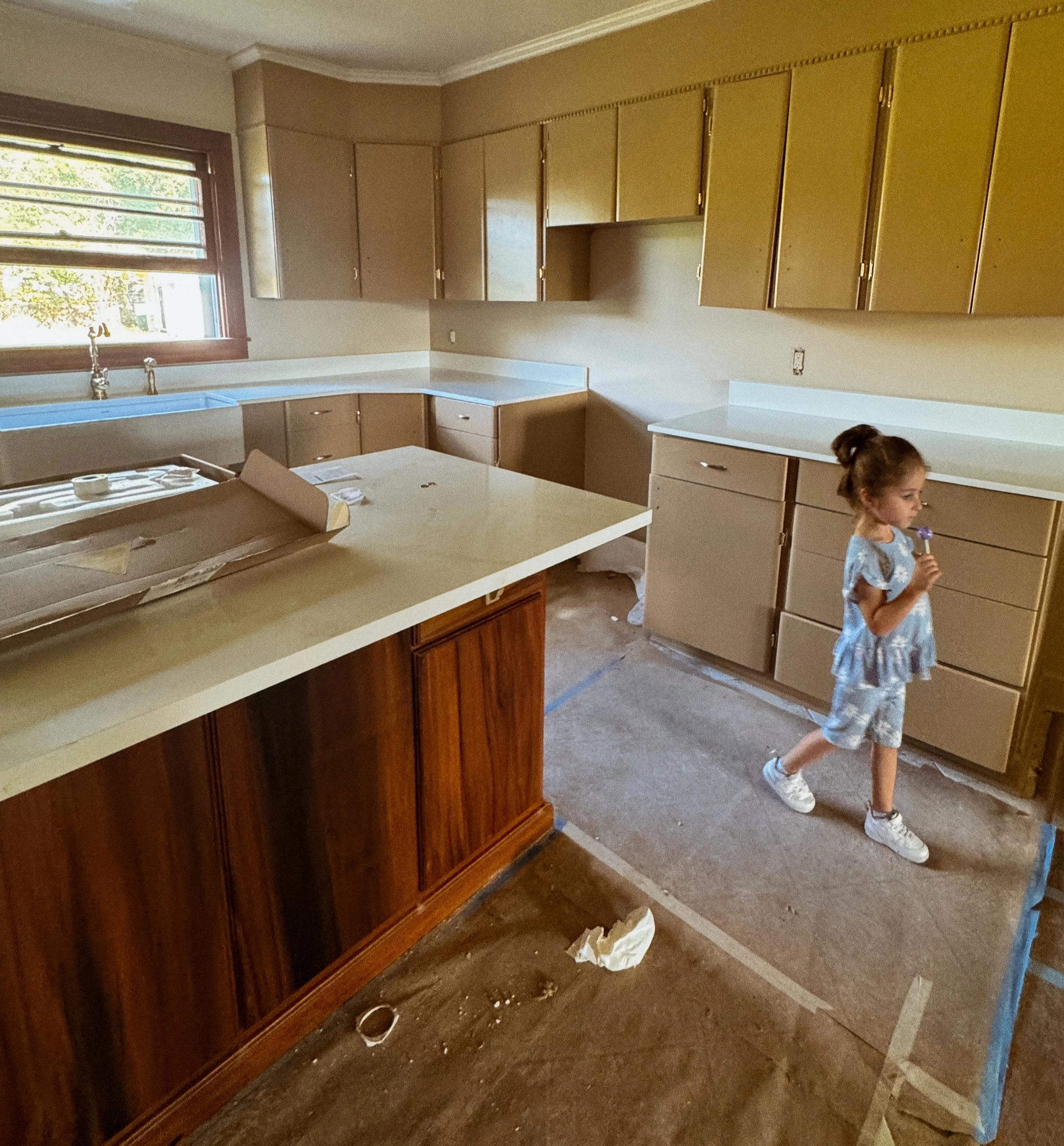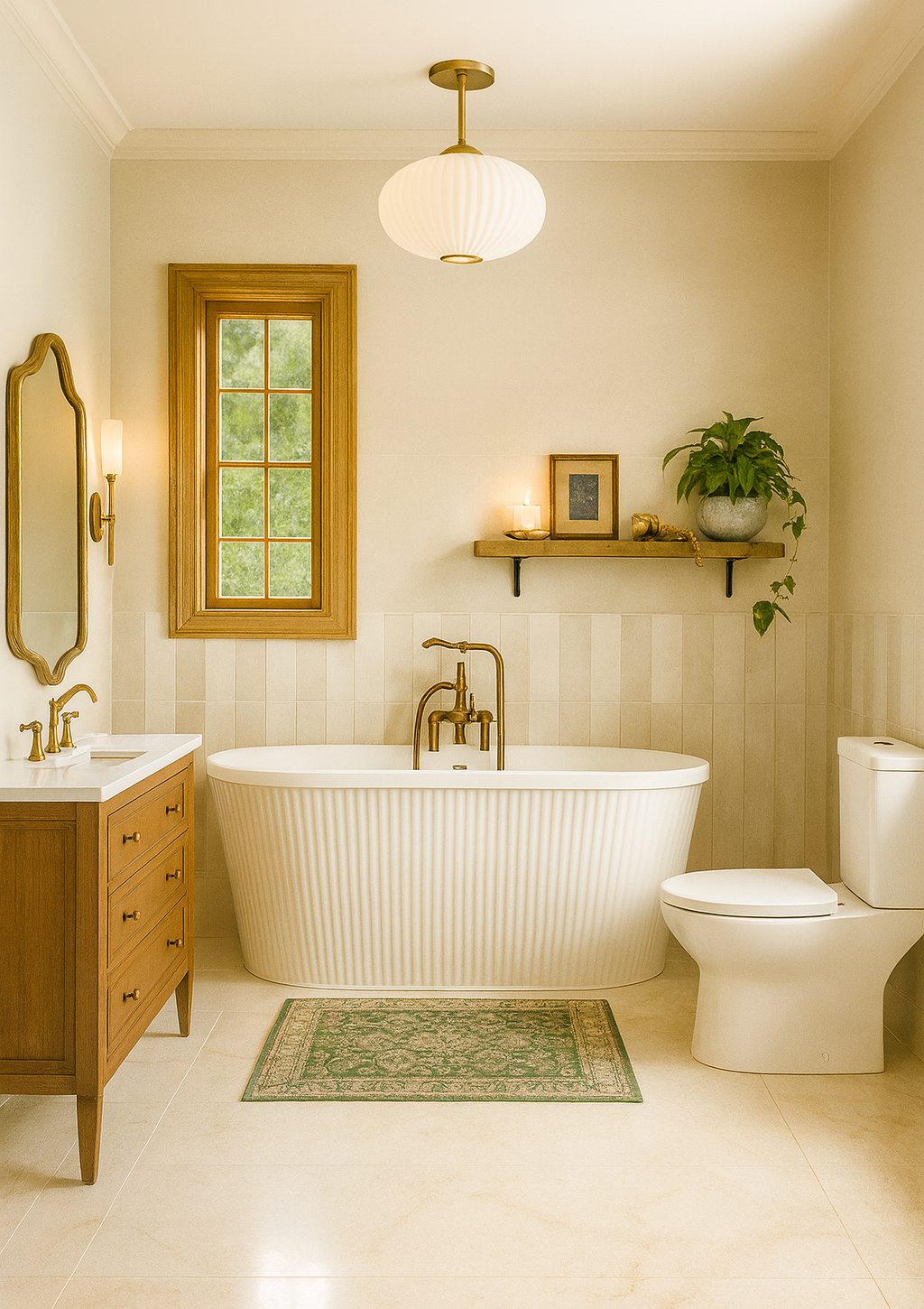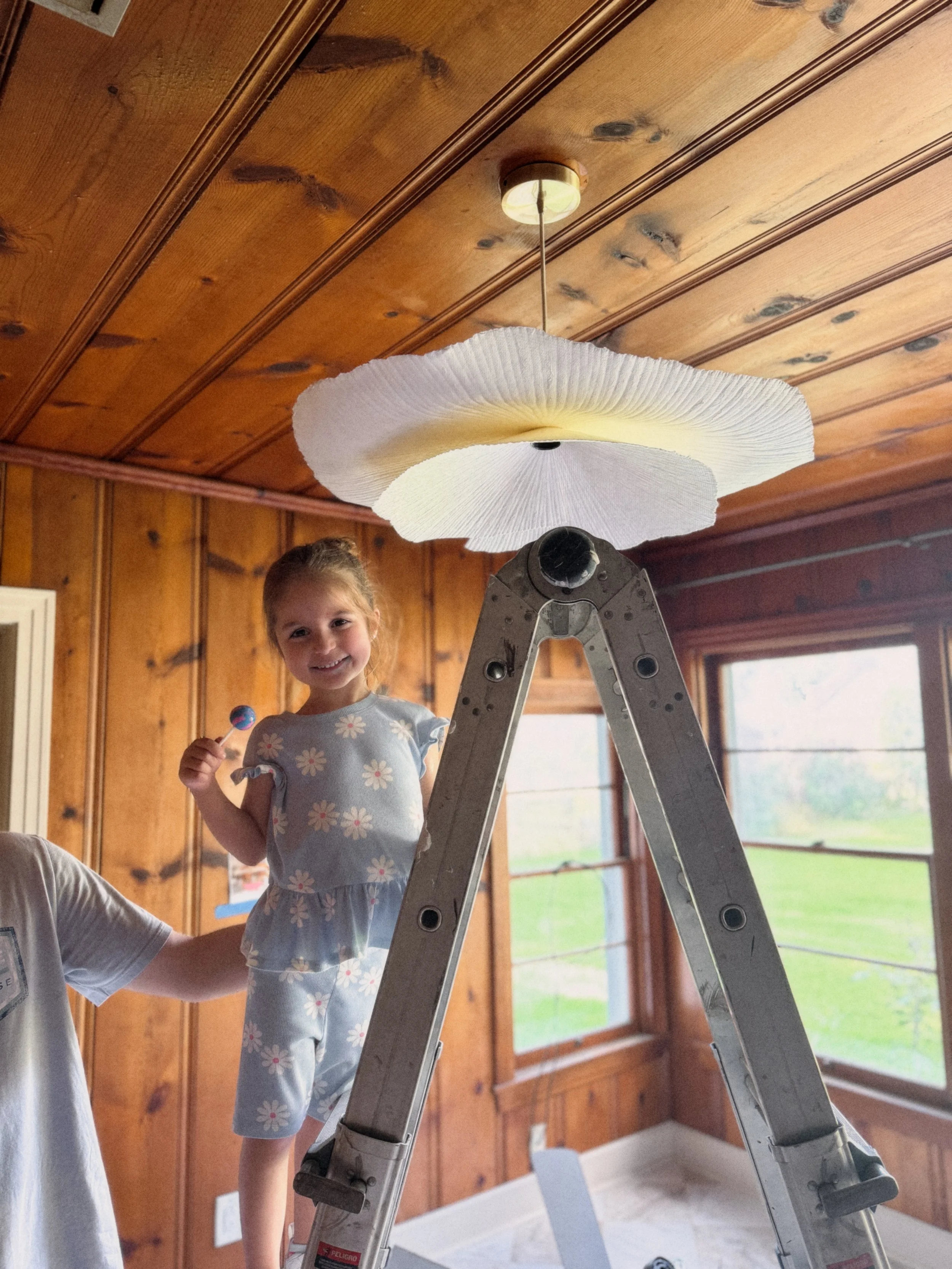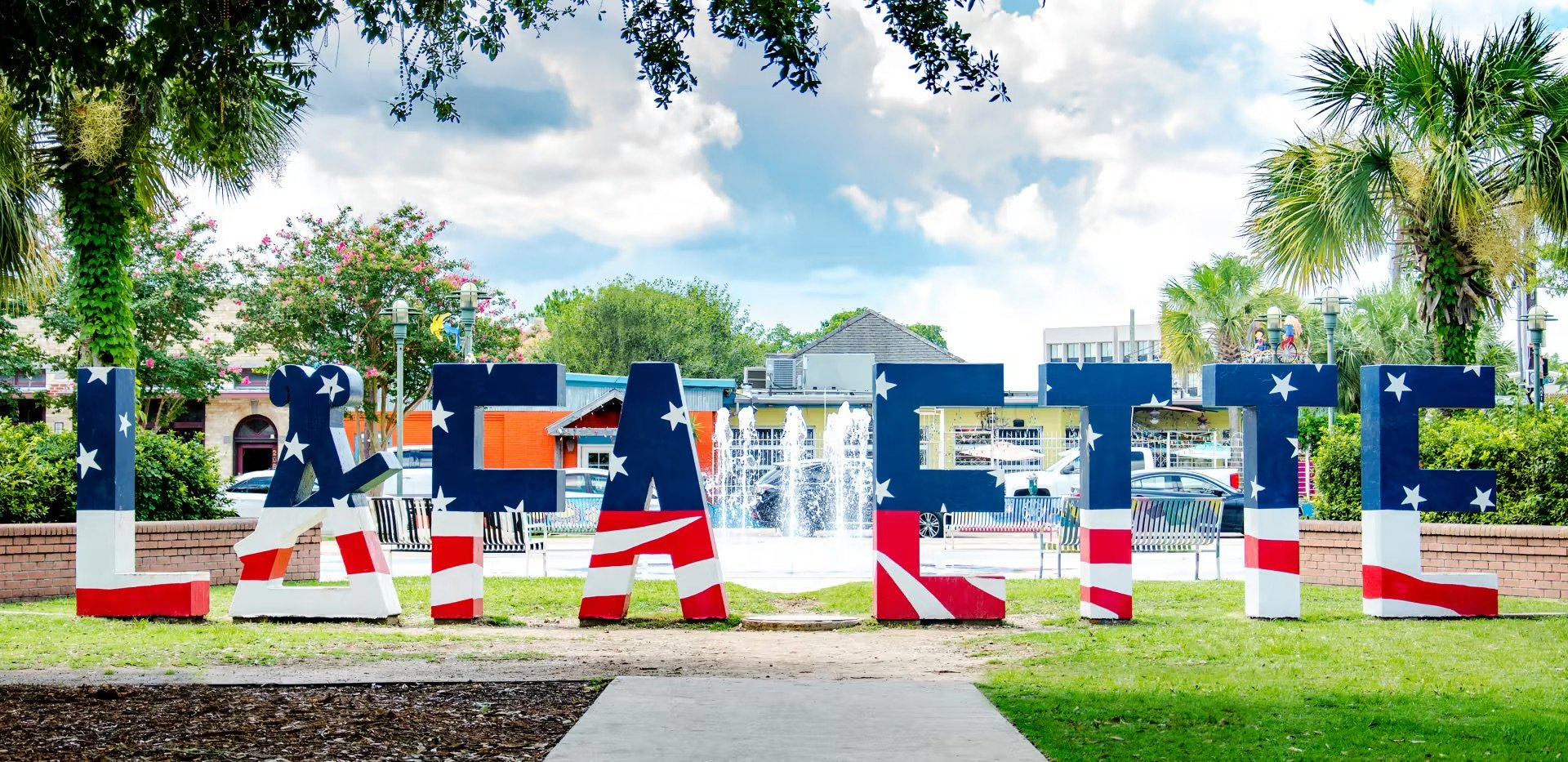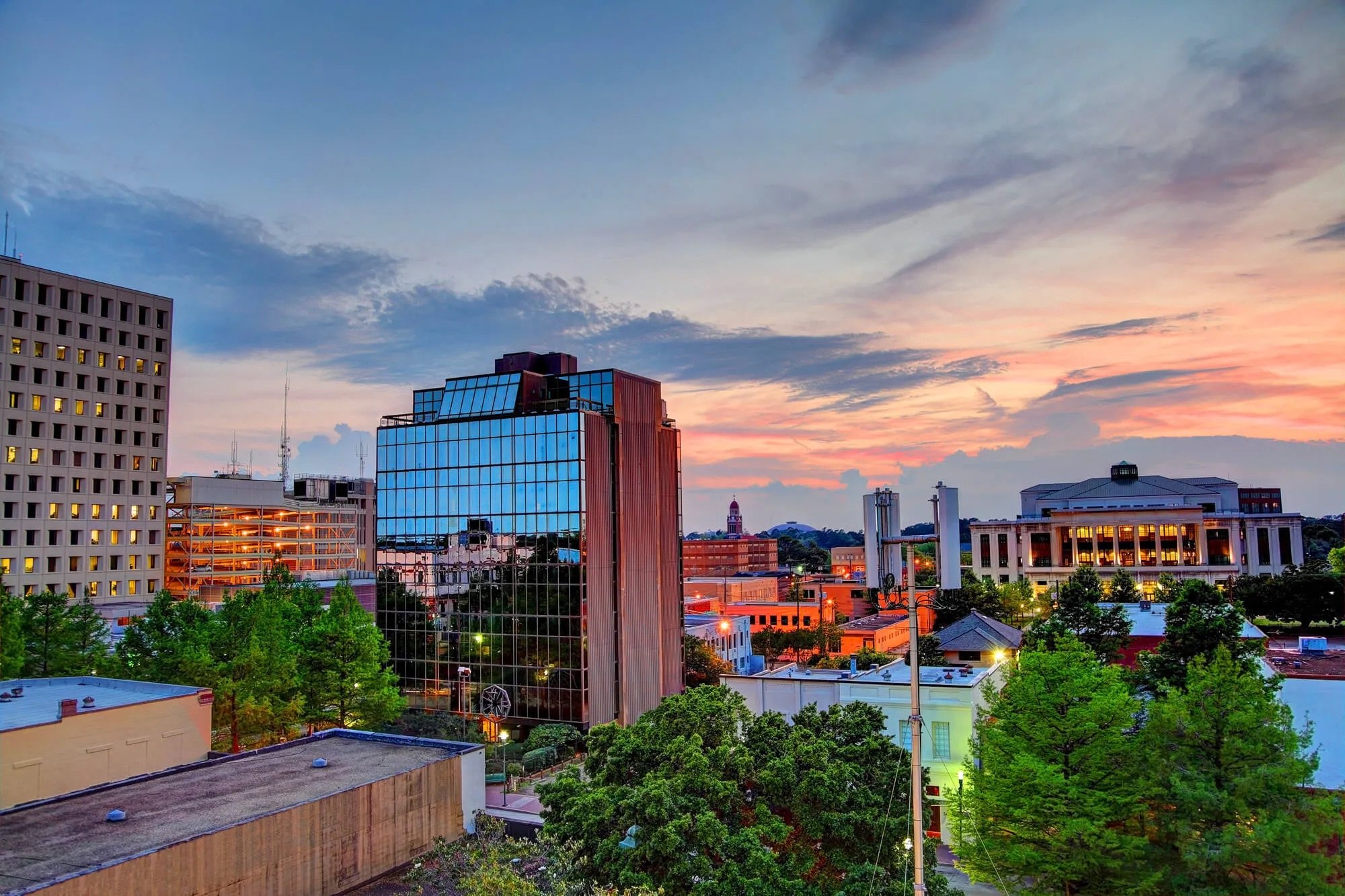From a Flip to a Feeling: How 105 Teche Became Lafayette’s Design Darling
Renovation progress looks good in theory — until your bathroom mirrors turn out to be auto parts. Between countertop wins, lighting surprises, and a few shipping misfires, the Teche Flip is still pulling off her modern cottagecore moment with suspiciously good humor.
There’s a shift that happens in every renovation—the day you walk in and realize the construction zone has quietly turned into a home. That’s where we’re at with 105 Teche Drive. The paint’s on, the floors are in, and the lighting is… somewhere between “en route” and “back-ordered.” The bathrooms? Drama. The kitchen? Straight from a Nancy Meyers fever dream, but, like…cooler.
It’s giving modern-luxe cottagecore with just enough edge to keep it interesting. And while Blaise ran off to elope (while I sobbed at home about how stunning and happy he and Teagan looked), our head contractor Ian and I kept the show running. Light fixtures in one hand, incorrect Amazon shipments in the other. Because the glow-up doesn’t wait for anyone, even the groom.
Here’s the latest update on the Teche Flip — AKA our favorite 70503 girlie in her renovation era.
The Kitchen’s Power Couple: Veined Countertops + Vintage Pendants
The island has landed, and she’s the moment.
We went for rich stain with a warm, grounded midtone, somewhere between a walnut and acacia finish, with those deep espresso striations that catch the light just enough to show off the grain. It’s not too polished or too rustic. It has that intentional, lived-in sheen that feels like it’s been there long enough to earn its confidence.
It’s doing exactly what it should: marrying the tone of the new floors with the original wood paneling in the dining room. The stain bridges those elements without competing: the cooler undertones of the flooring meet the honeyed warmth of the paneling halfway, and the island becomes the translator. Above it, a pair of vintage-inspired glass pendants will tie the look together. Their scalloped shades and subtle brass hardware feel familiar but refined — a soft nod to the home’s midcentury roots without dipping into nostalgia.
That continuity is what makes the Teche renovation feel considered instead of contrived. We didn’t erase the home’s original soul — we enhanced it. The untouched wood ceiling and walls in the dining now read as a deliberate design choice, not an afterthought, because the island carries that same organic depth forward. Something moody but still grounded. Topped with a thick Calacatta gold-veined quartz slab, it just quietly commands attention. As for the countertops along the wall cabinets? Simpler white quartz, so the island can actually be the anchor instead of fighting for attention.
This is where wine gets poured. Where gossip, business deals, pivotal life moments, and minor existential crises will happen. If you’re not leaning on this island mid-rant like it’s your scene partner, you’re missing the point.
Primary Bath: Vintage Brass Fixtures, Vertical Stripes, and a Hint of Main Character
Let’s start with the primary bath, because I don’t believe in saving the best for last.
We took a risk with hand-cut vertical tile arranged in a striped pattern, and it paid off big time. Paired with soft creamy walls and antiqued brass plumbing that looks expensive (but wasn’t), the whole room feels like a boutique hotel in Paris had a baby with a southern cottage.
The chandelier saga continues. The dining one was too big for the space. The bathroom one? ALSO too big for the space. So we pivoted—shifted the bath fixture to the dining room (taking the wood paneled dining room from “maw maw’s duck camp” to “modern cottage with a touch of romantic whimsy” ) and found a better-scaled one for the bath (fluted details win again). It’s all about the ability to pivot, keeping a (tired but keen) eye on proportions, and refusing to settle for “fine.”
Now the primary bath is all vintage brass fixtures, sculptural sconces, and just enough glow to make the paint color flex. Suddenly it’s not just a bathroom, it’s a vibe. Less Pinterest-core, more lived-in luxury. Personality-core with a capital P.
Guest Bath: The Moody One with the Niche (Literally)
In a word? She’s moody. We went full navy and onyx marbled tile in the shower, which makes the tub pop and adds just enough drama without going full batcave.
The real MVP here is the custom inset shampoo niche, finished in the same terrazzo tile as the floor — just cut into scallops in alternating scale, because you know I love a difficult detail. Brass trim finishes it off, and the deep navy ceiling ties it all together.
Still under construction, but the vision? Fully loaded.
Behind the Scenes: Still Messy, Still Magic
By this stage in any renovation, the universe starts to get a little bold with her sense of humor. Fixtures arrive cracked. Boxes show up missing the one part you actually need. And in our case, a certain supplier — looking at you, Bezos! — managed to send us a 2008 Honda Odyssey radiator instead of the pair of primary bathroom mirrors we ordered. (Close, but not quite.) It’s the part of the process where you stop asking why and just start asking how fast can I return this? But even with the shipping mishaps and dented egos, the house keeps moving forward — stubbornly, beautifully, almost in spite of us. We’re in the best part. The click moment. When design, function, and results finally agree on something.
I brought Evie through during demo months ago. Dust everywhere, a house held up by framing and vision alone. She stood on the porch and yelled, “Mama! Make this house beautiful!”
I’m happy to report: we did.
105 Teche Drive is becoming that balance of modern and nostalgic—a home with personality, presence, and no interest in playing by flip-book rules. What’s next: The last of the light fixtures, paint touch ups, final punch list, exterior cleanup, and prep for styling.
We’re almost at the part where I stop sweating about grout color and start posting listing links.
Stay tuned.
FAQs
-
We’re not doing beige boxes. Every decision has intention, texture, and a little rebellion baked in.
-
Lafayette light—rich hues, moody, and way too pretty to waste on gray paint.
-
By treating every project as a design story—not an inventory item.
-
We design for living, not for listing photos.
-
It’s a city that loves comfort and story. We design to reflect that.
-
We focus on long-lasting materials and timeless finishes over fast-trend choices.
-
Appliances, 1000 punch list items, final styling, and a photoshoot that’ll make all the dust worth it.
From “Fightin’ville” to Freetown: Exploring Lafayette’s Historic Districts This Memorial Day
Discover the rich military and cultural history behind Lafayette, Louisiana's most iconic neighborhoods—La Place, Freetown-Port Rico, Sterling Grove, Downtown, and Bendel Gardens. From “Fightin’ville” pride to Civil War-era roots, this Memorial Day, take a deeper look into the legacies that shaped the heart of Acadiana.
Let Me Tell You a Story About Lafayette…
Lafayette, Louisiana is more than good food and vibrant music—it’s a place where every street has a story. While it thrives in the present, Lafayette is deeply rooted in history, especially in neighborhoods where military heritage, cultural pride, and community leadership converge.
Let’s take a walk through some of the city’s most iconic neighborhoods. These places don’t just hold homes—they hold legacies.
La Place: A Legacy of Education, Leadership—And Grit
Welcome to La Place, affectionately known as “Fightin’ville.” That nickname isn’t about conflict—it’s a badge of honor, symbolizing the community’s enduring strength, pride, and tenacity through generations.
Established shortly after Downtown Lafayette, La Place became a cornerstone for African American advancement. It was here in 1903 that Lafayette’s first academic school for Black students opened its doors. By 1911, the first African American Catholic Church stood tall as a symbol of faith and unity.
La Place produced leaders, change-makers, and cultural icons. Even during the Civil Rights Movement, its streets echoed with determination as national voices like Dr. Martin Luther King Jr. passed through.
Today, Lafayette proudly honors “Fightin’ville” with the Heritage Walk—a curated path that celebrates the people and places that shaped this bold, beautiful neighborhood.
Freetown-Port Rico: A Story of Resilience and Celebration
Just down the road is Freetown-Port Rico, a district originally settled by formerly enslaved people during the Civil War era. Today, it’s one of Lafayette’s most eclectic and culturally vibrant communities.
Designated a National Historic District, this neighborhood blends historical architecture—like Craftsman bungalows and Tudor-style homes—with modern creativity and community pride. Residents work together through a passionate neighborhood coterie to preserve the character and inclusivity that define this space.
It’s a neighborhood that doesn’t just remember the past—it celebrates it every day.
Sterling Grove: Preserving Historic Elegance
The Sterling Grove Historic District offers a serene retreat into the architectural past. Once home to the estate of Charles Mouton, a former Louisiana lieutenant governor, this neighborhood now holds over 50 historically preserved homes ranging from Greek Revival to Colonial styles.
Listed on the National Register of Historic Places, Sterling Grove showcases Lafayette’s roots in a quiet, residential setting where time seems to stand still.
Downtown Lafayette: A Cultural Crossroads
Downtown Lafayette isn’t just the city’s business hub—it’s the historical heart with deep military roots. Once part of the Attakapas region, the area played a significant role during various military movements, including serving as a vital crossroads during the Civil War.
Today, it’s a vibrant mix of heritage and innovation. Restored storefronts stand where supply routes once ran, and cultural festivals now echo the resilience of a community shaped by history. For anyone looking to understand both where Lafayette started and where it’s headed, this is the place to be.
Bendel Gardens: From Plantation Roots to Riverside Peace
Once known as Walnut Grove Plantation—an estate of strategic importance during the Civil War—Bendel Gardens has evolved into one of Lafayette’s most serene and picturesque neighborhoods. Situated along the banks of the Vermilion River, this area is now known for its grand, oak-lined streets and graceful, historic homes.
What was once a pivotal piece of farmland during wartime is today a peaceful residential enclave. The legacy of its past lives on in the magnolia-lined drives and the quiet dignity that surrounds every corner of the community.
Why These Neighborhoods Matter
These aren’t just neighborhoods—they’re living legacies. Each one is a tribute to the people, sacrifices, and stories that built Lafayette. Whether you’re a homebuyer looking for character, a history buff exploring the past, or a resident appreciating your roots, Lafayette’s historic districts offer a rich and resonant experience.
FAQs
-
Absolutely! Many of Lafayette's historic neighborhoods are open to the public year-round. You can explore areas like Downtown Lafayette and Freetown-Port Rico on your own or participate in guided tours. For instance, the Downtown Lafayette Cajun History & Folklore Walking Tour offers insights into the area's rich history. Additionally, Vermilionville provides a living history experience with restored 18th and 19th-century homes.
-
The Alexandre Mouton House, also known as the Lafayette Museum, is a prime destination. Built around 1800 by Jean Mouton, one of Lafayette's founders, the museum showcases artifacts and exhibits related to the Mouton family's involvement in Louisiana's history, including the Civil War. For broader cultural insights, consider visiting the Acadian Cultural Center, which delves into the region's Cajun and Creole heritage.
-
Occasionally, yes—and they’re often highly sought after. If you’re interested, contact me today to get started and stay ahead of new listings!



